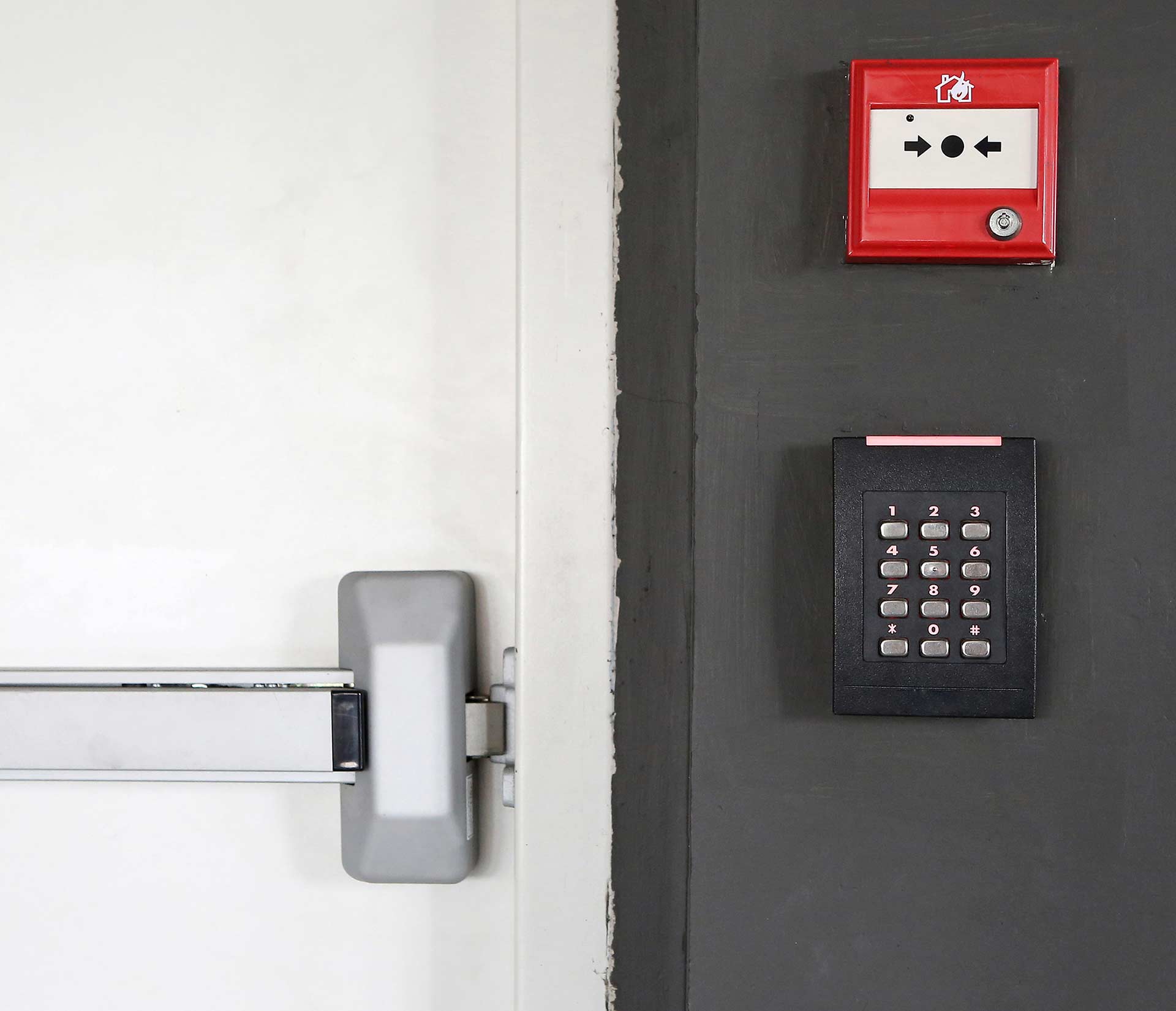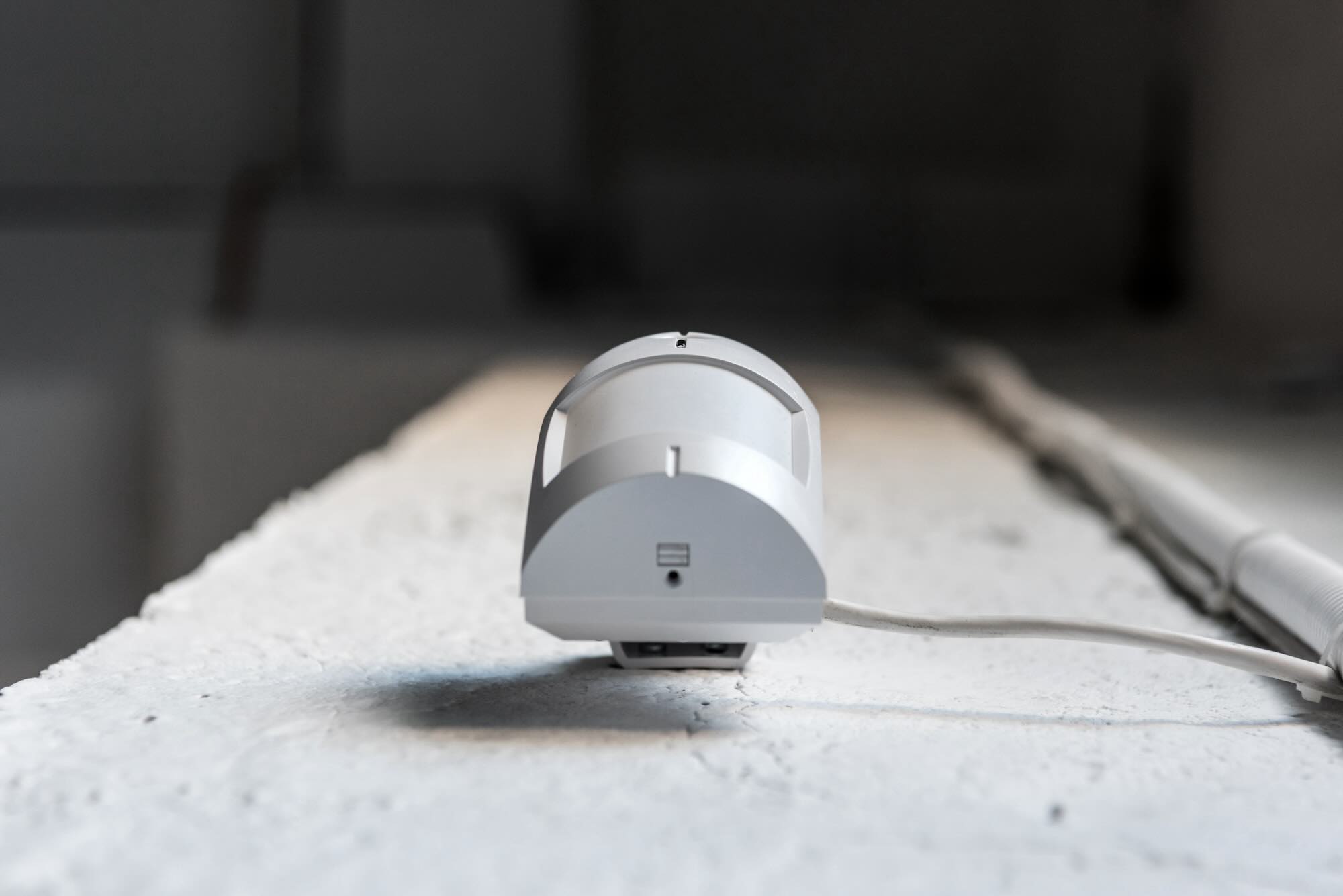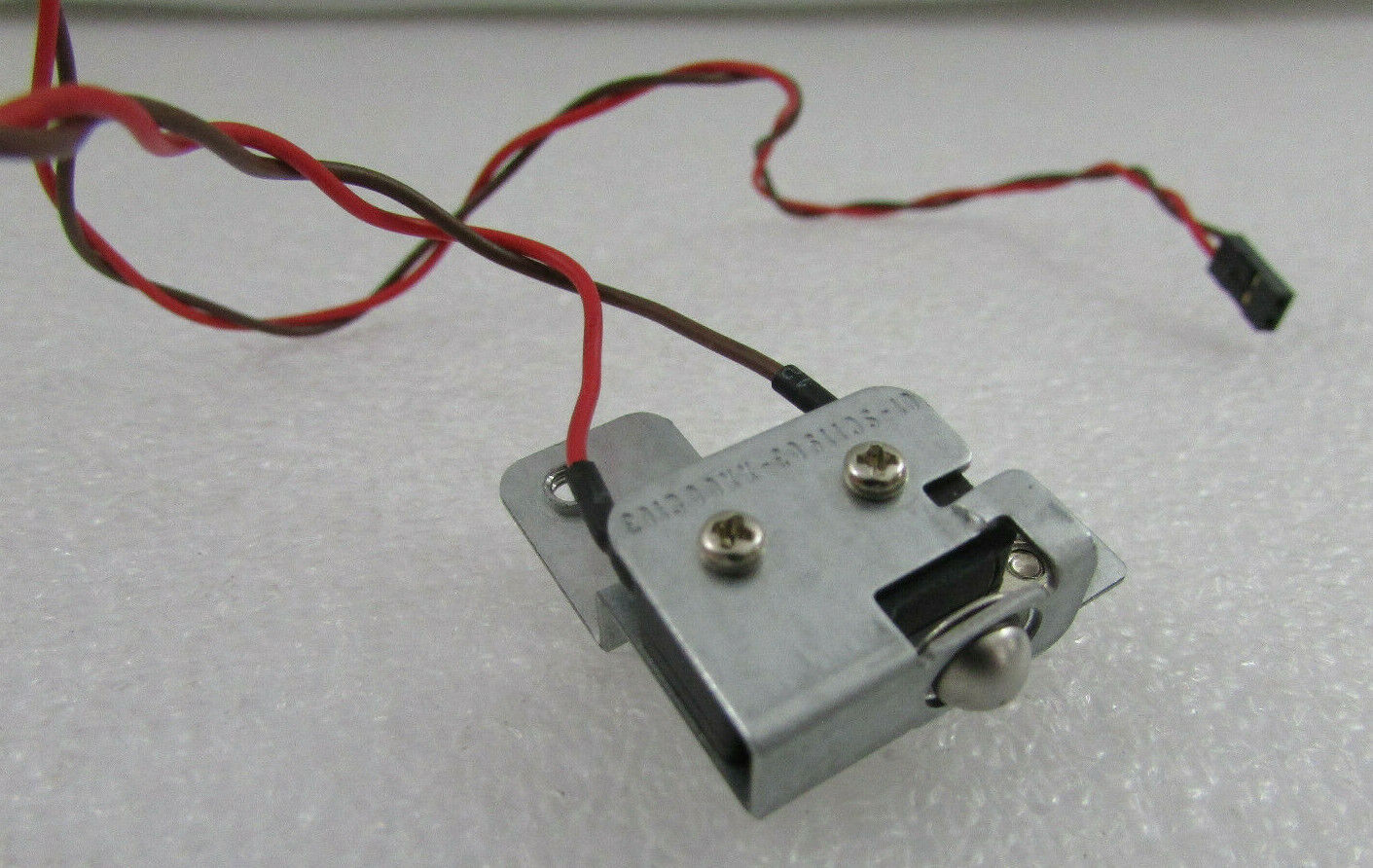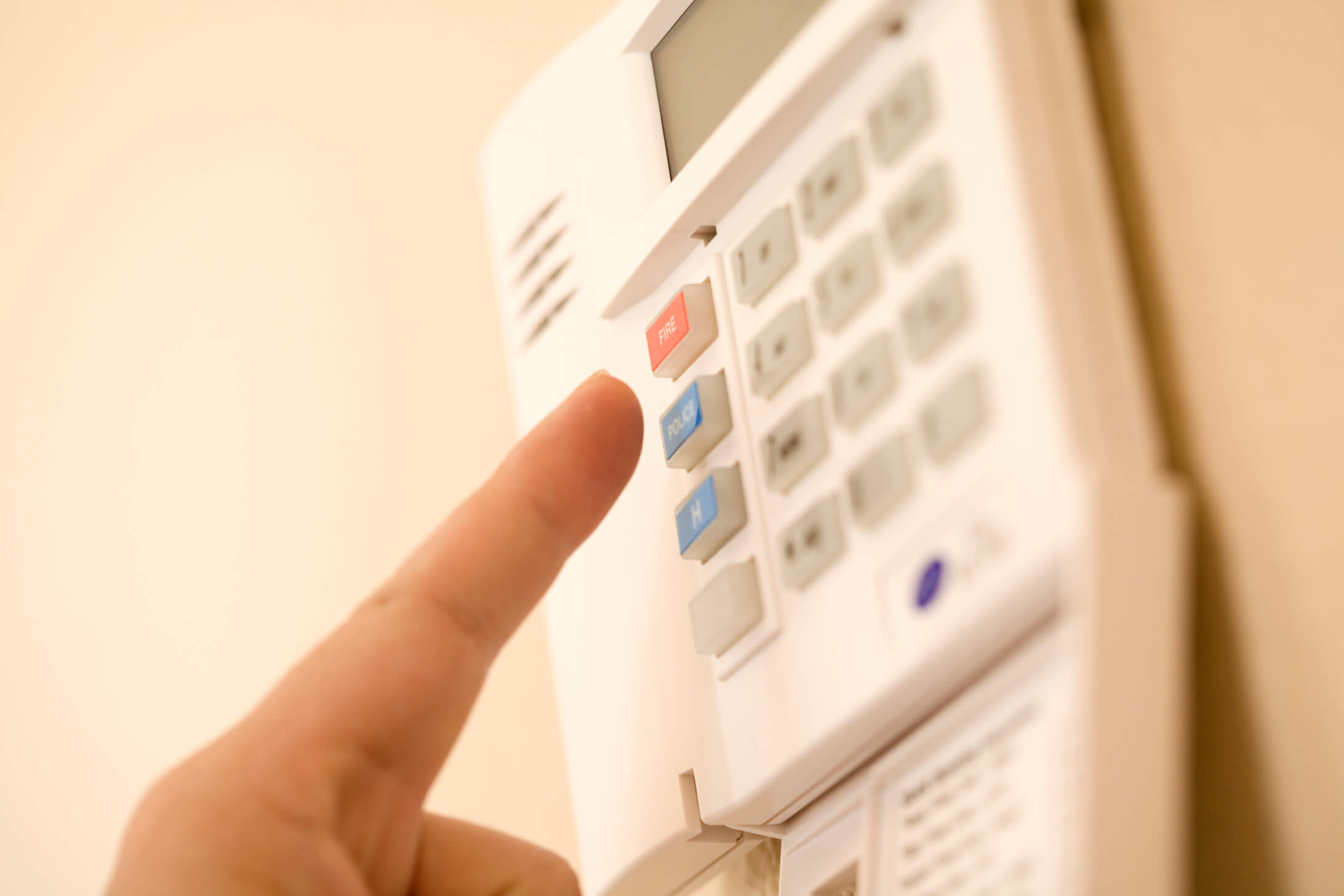Home>Home Security and Surveillance>How To Set Up Intrusion Detection System On Switch


Home Security and Surveillance
How To Set Up Intrusion Detection System On Switch
Modified: March 21, 2024
Learn how to set up an intrusion detection system on your switch for enhanced home security and surveillance. Protect your property with our step-by-step guide.
(Many of the links in this article redirect to a specific reviewed product. Your purchase of these products through affiliate links helps to generate commission for Storables.com, at no extra cost. Learn more)
Introduction
Welcome to the world of home security and surveillance! In today’s unpredictable times, it’s crucial to prioritize the safety of our homes and loved ones. One effective way to achieve this is by setting up an Intrusion Detection System (IDS) on your switch. An IDS is a crucial component of any comprehensive home security system, as it helps detect and prevent unauthorized access and potential security breaches.
In this article, we will guide you through the process of setting up an Intrusion Detection System on your switch. Whether you’re a home security enthusiast or a newbie looking to enhance your home’s safety, this step-by-step guide will equip you with the knowledge to effectively protect your home.
Before we dive into the technicalities, let’s briefly understand what exactly an Intrusion Detection System is and why it’s essential for your home security.
Key Takeaways:
- Protect Your Home Like a Pro
Setting up an Intrusion Detection System on your switch is like having a vigilant guardian for your home network. It monitors and detects potential security breaches, keeping your loved ones and valuables safe. - Test, Tweak, and Stay Safe
After setting up your IDS, it’s important to test and validate it regularly. By simulating attacks, monitoring alerts, and staying updated, you can fine-tune your security and ensure a safe home network.
Understanding Intrusion Detection Systems
Before we proceed with setting up an Intrusion Detection System (IDS) on your switch, it’s important to have a clear understanding of what an IDS is and how it contributes to your home security.
An Intrusion Detection System is a security solution that monitors and analyzes network traffic to identify and respond to potential security threats, including unauthorized access attempts, malicious activities, and network anomalies. It acts as a vigilant guardian, continuously scanning your network for any signs of intrusion.
There are two primary types of IDS: network-based IDS (NIDS) and host-based IDS (HIDS).
- Network-based IDS (NIDS): This type of IDS is placed at strategic points in your network architecture to analyze network traffic and detect any suspicious or unauthorized activities. NIDS can detect various types of attacks, such as port scanning, packet sniffing, and denial-of-service (DoS) attacks. It provides broad network visibility and is suitable for monitoring multiple devices and systems.
- Host-based IDS (HIDS): Unlike NIDS, which focuses on network traffic, HIDS is installed on individual devices or hosts to monitor activities specific to that device. It can detect unusual system behavior, unauthorized file modifications, and malicious processes. HIDS provides granular visibility at the device level, making it effective for detecting attacks targeted at specific devices.
Both NIDS and HIDS work together to provide comprehensive security coverage for your home network. By analyzing network traffic and host activity, IDS can detect potential intrusions and raise alerts, enabling you to take timely action to protect your home.
An Intrusion Detection System consists of the following components:
- Sensors: These are responsible for capturing network packets, filtering them, and forwarding them to the IDS for analysis. Sensors can be hardware-based or software-based, depending on the IDS implementation.
- Analyzers: Analyzers process the network data received from sensors and apply predefined rules and algorithms to identify potential intrusions or abnormal behavior.
- Alerts: When an IDS detects a potential intrusion or security breach, it generates alerts to notify the security personnel or network administrator.
- Management Console: This is the central control point where administrators can configure and manage the IDS, view alerts, and analyze security events.
Now that we have a basic understanding of IDS and its components, let’s move on to the next step: setting up the IDS on your switch.
Setting Up the Switch
Setting up your switch properly is an essential step in establishing a robust home security system with an Intrusion Detection System (IDS). Here are the key steps to follow:
- Choose the Right Switch: Selecting the right switch for your home network is crucial. Look for a switch that offers advanced security features, such as VLAN support, port mirroring, and access control lists (ACLs). These features will play a significant role in setting up and configuring your IDS.
- Plan Your Switch Placement: Determine the optimal location for your switch, considering factors like proximity to the primary router, accessibility, and cable management. Ensure that the switch is adequately ventilated to prevent overheating.
- Connect Devices to the Switch: Connect your devices, such as computers, security cameras, and IoT devices, to the appropriate ports on the switch. Ensure that each device is securely connected using Ethernet cables.
- Label and Organize Cables: Properly label and organize the cables connected to the switch to avoid confusion and make troubleshooting easier in the future. Use cable ties or cable management solutions to keep the cables neat and organized.
- Power Up the Switch: Connect the power cord of the switch to a reliable power source and turn it on. Verify that the switch has powered up correctly by checking the LED indicators on the front panel.
- Configure Basic Switch Settings: Access the switch’s configuration interface, typically done using a web browser or a console cable connected to a computer. Set the desired administrative password, hostname, and management IP address for the switch.
- Enable Security Features: Enable the necessary security features on the switch, such as port security and VLANs, to enhance the overall network security. These features will provide a solid foundation for setting up the IDS.
- Update Firmware: Check for any available firmware updates for your switch model and ensure that it is running the latest firmware version. Firmware updates often include security patches and feature enhancements.
Once you have completed these steps, your switch is now ready for the next crucial step: configuring the Intrusion Detection System.
When setting up an Intrusion Detection System on a switch, make sure to enable port mirroring to send a copy of network packets to the IDS for analysis without affecting the original traffic flow.
Configuring Intrusion Detection System on the Switch
Now that your switch is set up, it’s time to configure the Intrusion Detection System (IDS) to strengthen your home security. Here’s a step-by-step guide to help you configure the IDS on your switch:
- Identify IDS Requirements: Determine your specific security needs and goals. Decide which type of IDS you want to implement – Network-based IDS (NIDS) or Host-based IDS (HIDS) – or a combination of both.
- Enable Port Mirroring: Port mirroring allows the switch to copy network traffic from specific ports to a designated monitoring port. Enable port mirroring on the switch to ensure that IDS can analyze all the network traffic passing through the switch.
- Configure IDS Rules: IDS rules define what the IDS should look for in network traffic. Create or import a set of IDS rules and define the actions to be taken when an intrusion is detected. These rules will serve as the basis for detecting and responding to potential security threats.
- Set IDS Alert Notifications: Configure the IDS to generate alerts when suspicious activities are detected. Set up email notifications or integrate with a security management system for real-time alerts and monitoring.
- Monitor IDS Alerts: Regularly monitor the IDS alerts to stay informed about potential security threats. Take immediate action if any suspicious activity is detected.
- Periodically Update IDS Rules: Keep your IDS rules up to date by regularly checking for updates from security vendors or the open-source community. New threats are continually emerging, and updating your IDS rules will ensure optimal protection against them.
- Regularly Test and Validate IDS: Perform periodic testing and validation of your IDS to ensure it’s functioning correctly. Conduct penetration testing, simulate attacks, and assess the system’s effectiveness in detecting and responding to these simulated threats.
- Maintain IDS Logs: Enable logging on the IDS to maintain a record of all detected security events. These logs can be valuable for forensic analysis and investigating security incidents.
- Integrate with Security Incident Response System: If you have an established security incident response system, integrate your IDS with it. This will help automate the response and remediation process for any identified security incidents.
Remember, configuring the IDS is an ongoing process. Stay informed about the latest security trends and threats, and regularly update and fine-tune your IDS configuration to ensure optimal protection for your home network.
Now that you have successfully set up and configured the Intrusion Detection System on your switch, it’s time to test and validate its effectiveness.
Testing and Validating the Intrusion Detection System
After configuring the Intrusion Detection System (IDS) on your switch, it’s crucial to test and validate its effectiveness. This will help ensure that your home network security is strengthened and any potential security threats are promptly detected and mitigated. Here’s a step-by-step process to test and validate your IDS:
- Simulate Attacks: Start by simulating different types of attacks on your network to see how the IDS responds. This can include port scanning, DoS attacks, or attempting to access restricted areas. Observe if the IDS generates timely alerts and takes appropriate action in these scenarios.
- Monitor Alert System: Pay close attention to the IDS alert system. Regularly check for any generated alerts and their associated details. Evaluate the accuracy and relevance of the alerts to determine if they align with the expected behavior of your network.
- Analyze False Positives and Negatives: False positives occur when the IDS incorrectly identifies legitimate network activities as potential security threats. False negatives, on the other hand, are missed detections of actual intrusions. Analyze both false positives and negatives to fine-tune the IDS configuration and minimize these occurrences.
- Conduct Penetration Testing: Perform penetration testing on your network to expose vulnerabilities and assess the IDS’s ability to detect and respond to these simulated attacks. Penetration testing helps uncover any weaknesses or blind spots in the IDS that need to be addressed.
- Validate with Security Experts: Seek the expertise of security professionals or consult online security communities to validate your IDS configuration. These experts can provide insights and recommendations based on their extensive experience in the field, helping you improve the effectiveness of your IDS.
- Review IDS Logs: Regularly review the IDS logs to identify any suspicious activities that may have been missed by the alert system. Look for patterns or trends in the log data that could indicate potential security breaches. Constantly analyze the logs to enhance your understanding of your network’s security posture.
- Keep Up with Updates: Stay updated with the latest security threats and vulnerabilities. Regularly update your IDS rules, firmware, and security patches to ensure your system remains resilient against emerging threats.
Remember that testing and validating your IDS is an ongoing process. The security landscape is constantly evolving, and new threats emerge frequently. Regularly re-evaluate your IDS configuration, conduct periodic tests, and make adjustments as necessary to maintain a robust and resilient security posture for your home network.
With a properly tested and validated Intrusion Detection System, you can have confidence in the security of your home network and the safety of your loved ones.
Now, let’s wrap up our article with a summary of the key points covered.
Read more: What Is Wireless Intrusion Detection
Conclusion
In today’s world, where digital threats are ever-present, securing your home network is paramount. By setting up an Intrusion Detection System (IDS) on your switch, you can add an extra layer of protection to your home security system. The IDS acts as a vigilant guardian, monitoring network traffic, and detecting potential security breaches.
Throughout this article, we have explored the essential steps to set up and configure an IDS on your switch. We began by understanding what an IDS is and its importance in home security. We then delved into the process of setting up the switch, ensuring its proper placement, connection, and basic configuration.
Next, we explained the intricacies of configuring the IDS on your switch, including enabling port mirroring, setting up IDS rules, and configuring alert notifications. We emphasized the significance of staying up-to-date with security trends, periodically updating IDS rules, and maintaining comprehensive log records.
Finally, we highlighted the importance of testing and validating your IDS to ensure its effectiveness. Through simulated attacks, monitoring the alert system, and analyzing false positives and negatives, you can fine-tune your IDS configuration and address any vulnerabilities. We also emphasized the value of seeking expert validation and continually reviewing IDS logs for enhanced security insights.
By following these steps and continuously monitoring and updating your IDS, you can achieve a robust and effective home security solution. Implementing a properly configured and validated IDS will help safeguard your home network, protecting against potential intrusions and ensuring the safety of your loved ones and valuable assets.
Remember, home security is an ongoing pursuit. Stay informed about the latest security threats, regularly update your IDS rules and firmware, and conduct periodic tests to maintain a strong defense against evolving digital risks.
Now armed with this knowledge, you’re ready to embark on your journey to fortify your home security with an Intrusion Detection System on your switch. Wishing you a safe and secure home network!
Frequently Asked Questions about How To Set Up Intrusion Detection System On Switch
Was this page helpful?
At Storables.com, we guarantee accurate and reliable information. Our content, validated by Expert Board Contributors, is crafted following stringent Editorial Policies. We're committed to providing you with well-researched, expert-backed insights for all your informational needs.














